Aulonocranus dewindti
Scientific name: Aulonocranus dewindti
Common name: N/A
Family: Cichlidae
Usual size in fish tanks: 12 - 14 cm (4.72 - 5.51 inch)
014
Recommended pH range: 7.8 - 8.8
Recommended water hardness: 10 - 20°N (178.57 - 357.14ppm)
0°C 32°F30°C 86°F
Recommended temperature range: 24 - 26 °C (75.2 - 78.8°F)
The way how these fish reproduce: Spawning
Where the species comes from: Africa
Temperament to its own species: aggressive/territorial
Temperament toward other fish species: aggressive/territorial
Usual place in the tank: Middle levels
Origin
Aulonocranus dewindti is native to the clear, freshwater depths of Lake Tanganyika in East Africa. Unlike many other African cichlids that inhabit rocky environments, this species prefers sandy substrates where it spends much of its time sifting through the sand in search of food. Lake Tanganyika is the second-deepest freshwater lake in the world, with a unique ecosystem that supports many endemic species, including this fascinating featherfin cichlid.
Short Description
Aulonocranus dewindti is part of an exclusive group of African cichlids known as "featherfins," named for their elegant, flowing fins that resemble delicate feathers. This striking feature adds to their visual appeal, making them a popular choice for cichlid enthusiasts. Commonly referred to as the Dewindti Cichlid, they are generally peaceful compared to other African cichlid species but still exhibit territorial behavior, particularly during breeding. Reaching an adult size of around 5 inches (12.5 cm), they require ample space in the aquarium despite their moderate size. It’s important not to underestimate their need for swimming room and territory establishment.
Lifespan
With proper care and a well-maintained environment, Aulonocranus dewindti can live for 5-8 years. Their longevity depends on maintaining excellent water quality, providing a suitable diet, and reducing stress within the aquarium.
General Care
Unlike many other cichlids, you can house more than one male Aulonocranus dewindti in the same aquarium, but this requires sufficient space for each male to establish and defend his own territory. A ratio of three females per male is ideal to minimize stress and aggression. The minimum recommended tank size for this species is 4 feet (120 cm) in length, though larger aquariums are always preferable for their territorial nature. Create hiding spots using rocks, driftwood, and terracotta pots, which males will utilize for nesting during breeding.
The ideal water temperature for Aulonocranus dewindti ranges between 25-26°C (77-79°F), and maintaining stable water conditions is crucial to their health. As with most cichlids, they are high waste producers, so a strong filtration system rated for the aquarium’s volume is necessary to keep the water clean. Weekly water changes of at least 10% will help maintain water quality and reduce the risk of health issues.
Feeding
To keep Aulonocranus dewindti healthy and vibrant, it’s essential to provide a varied diet. A base of high-quality cichlid pellets or commercial flake food can be supplemented with live or frozen treats like brine shrimp, bloodworms, and daphnia. They also benefit from occasional offerings of spirulina-based flake food, which supports their nutritional needs and enhances their coloration. A varied diet helps mimic their natural feeding habits and ensures they remain engaged and well-nourished.
Sexing
Sexing Aulonocranus dewindti is relatively straightforward once the fish are mature. Males are larger, with more pronounced and extended finnage compared to females. During the breeding season, the males’ colors may also intensify as part of their courtship display.
Breeding
Aulonocranus dewindti are maternal mouthbrooders, which means the female will carry and protect the fertilized eggs in her mouth until they hatch and the fry are ready to be released. Breeding begins when the male constructs a nest, usually in a depression in the substrate or a cave. He will then entice the female to the nest, where spawning occurs. Once the eggs are fertilized, the female will scoop them into her mouth, where they will incubate for several weeks. During this time, it is crucial to avoid stressing the female, as this may cause her to release the eggs prematurely, leading to the loss of the brood.
Once the fry are large enough to leave the mother’s mouth, they can be fed newly hatched brine shrimp or other fine foods suitable for young fish. Providing a calm, stress-free environment will increase the likelihood of successful breeding and fry survival.

 Thread-finned
Thread-finned 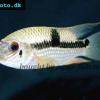 Acara
Acara  Yellow
Yellow  Patrick's
Patrick's  Blue
Blue  Green
Green 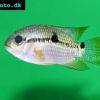 Acara
Acara  White
White  Compressed
Compressed 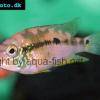 Pastel
Pastel  Midas
Midas  Red
Red  Bluemouth
Bluemouth  False
False 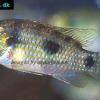 African
African  Agassiz's
Agassiz's  Banded
Banded 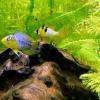 Yellow
Yellow  Cockatoo
Cockatoo  Blue
Blue  Blackstripe
Blackstripe  Highfin
Highfin  Redstripe
Redstripe  Threadfinned
Threadfinned  Macmaster’s
Macmaster’s 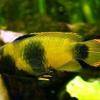 Panda
Panda  Norbert’s
Norbert’s 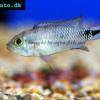 Blue
Blue  Thin-line
Thin-line  Three-striped
Three-striped  Viejita
Viejita 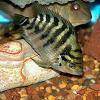 Flier
Flier  Archocentrus
Archocentrus  Convict
Convict  Seven
Seven  Spiny
Spiny  Oscar
Oscar  Sunshine
Sunshine  Chitande
Chitande  Firebird
Firebird  Midnight
Midnight  Lake
Lake  Sunshine
Sunshine  Aulonocara
Aulonocara  Nyasa
Nyasa 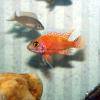 Ruby
Ruby  Grants
Grants  Chameleon
Chameleon  Benitochromis
Benitochromis  Orinoco
Orinoco  Yellow
Yellow 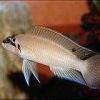 Brichard’s
Brichard’s  Guenther’s
Guenther’s  Southern
Southern  Cichla
Cichla 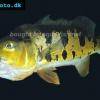 Peacock
Peacock  Chiseltooth
Chiseltooth  Bolivian
Bolivian  Red
Red  Many-pointed
Many-pointed  Jack
Jack  Red
Red  Three
Three 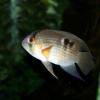 Keyhole
Keyhole  Azureus
Azureus  Red
Red  Jackson’s
Jackson’s  Crenicichla
Crenicichla  Honduran
Honduran  Blue-eye
Blue-eye  Afra
Afra 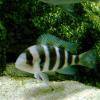 Frontosa
Frontosa  Slender
Slender  Malawi
Malawi  Chequerboard
Chequerboard  Checkerboard
Checkerboard  Malawi
Malawi  Ectodus
Ectodus  Tanganyika
Tanganyika  Canara
Canara  Green
Green  Rostratus
Rostratus  Pearl
Pearl 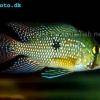 Geophagus
Geophagus  Yellowhump
Yellowhump  Suriname
Suriname  Redhump
Redhump  Red
Red  Dority’s
Dority’s  Argentine
Argentine 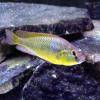 Burton’s
Burton’s  Victoria
Victoria 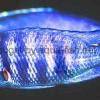 Haplochromis
Haplochromis  Jewel
Jewel  Banded
Banded 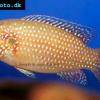 Lifalili
Lifalili  Lowland
Lowland  Texas
Texas  Pantano
Pantano  Severum
Severum  Banded
Banded 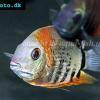 Severum
Severum  Rainbow
Rainbow  Parrot
Parrot  Chocolate
Chocolate  Brown
Brown  Marlieri
Marlieri  Golden
Golden  Striped
Striped  Masked
Masked 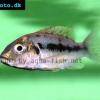 Konye
Konye  Blue
Blue  Trewavas
Trewavas  Electric
Electric  Dwarf
Dwarf  Redbreast
Redbreast  Lamprologus
Lamprologus  Gold
Gold 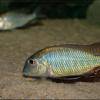 Greenface
Greenface 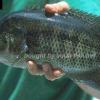 Mayan
Mayan  Aurora
Aurora  Blue
Blue  William’s
William’s 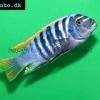 Zebra
Zebra  Malawi
Malawi  Blue
Blue 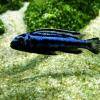 Blue
Blue  Mbuna
Mbuna  Parallel
Parallel  Purple
Purple  Flag
Flag  Bolivian
Bolivian  Ram
Ram  Basket
Basket 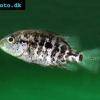 Haitian
Haitian  Zebra
Zebra  Striped
Striped  Neolamprologus
Neolamprologus  Brevis
Brevis  Fairy
Fairy 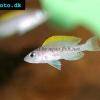 Neolamprologus
Neolamprologus  Cylindricus
Cylindricus  Hecq’s
Hecq’s  Neolamprologus
Neolamprologus  Lemon
Lemon  Mustax
Mustax  Daffodil
Daffodil  Six-bar
Six-bar  Five-bar
Five-bar  Marbled
Marbled 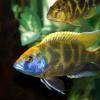 Giraffe
Giraffe  Blue
Blue  Sulphurhead
Sulphurhead  Wolf
Wolf  Jaguar
Jaguar  Blue
Blue  Marakeli
Marakeli  Madagascar
Madagascar  Pinstripe
Pinstripe  Pelmatochromis
Pelmatochromis  Kribensis
Kribensis 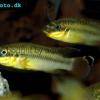 Striped
Striped  Red
Red  Deepwater
Deepwater  Fenestratus
Fenestratus  Nichols’
Nichols’  Southern
Southern  Bumble
Bumble  Demason’s
Demason’s  Slender
Slender  Red
Red  Mbuna
Mbuna  Malawi
Malawi  Kenyi
Kenyi  Powder
Powder  Altum
Altum  Angelfish
Angelfish  Angelfish
Angelfish 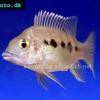 East
East  Juba
Juba  Earth
Earth 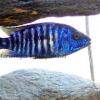 Electric
Electric  Azure
Azure 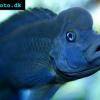 Lionhead
Lionhead  Discus
Discus  Blue
Blue  Red
Red  Zebra
Zebra  Brichard’s
Brichard’s  Blue
Blue  Firemouth
Firemouth  Zebra
Zebra  Yellow
Yellow  Blue
Blue  Dwarf
Dwarf  Blunthead
Blunthead 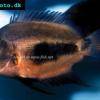 The
The  White
White  Twoband
Twoband  Fenestratus
Fenestratus  Window
Window  Tailbar
Tailbar  Black
Black  Redhead
Redhead 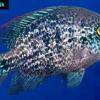 Oaxaca
Oaxaca  Xenotilapia
Xenotilapia